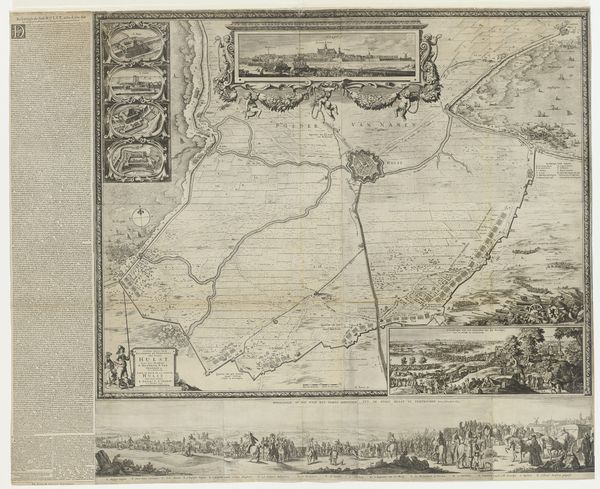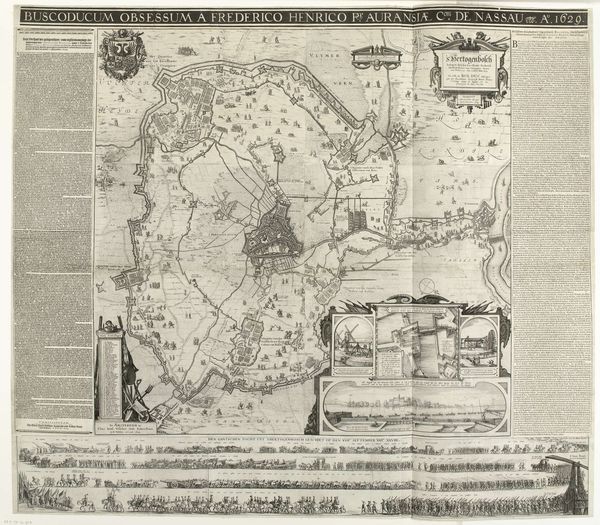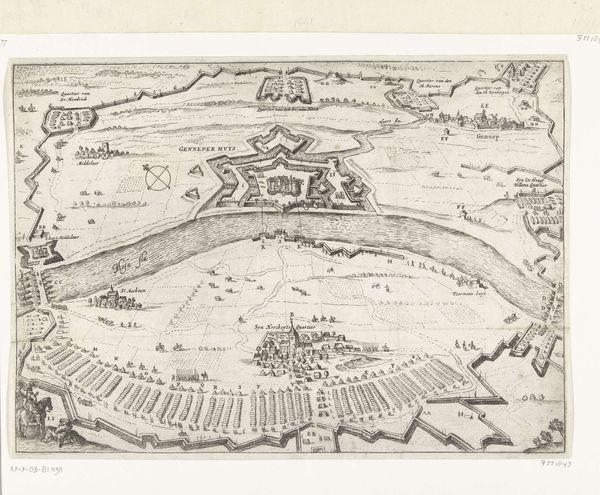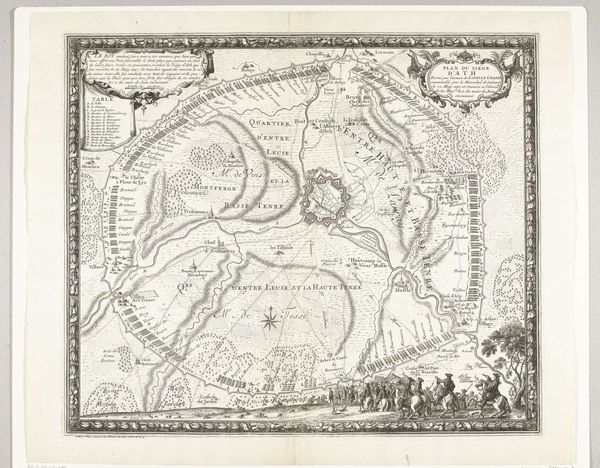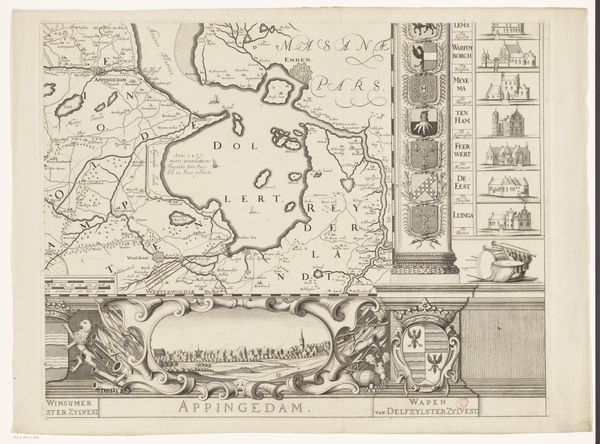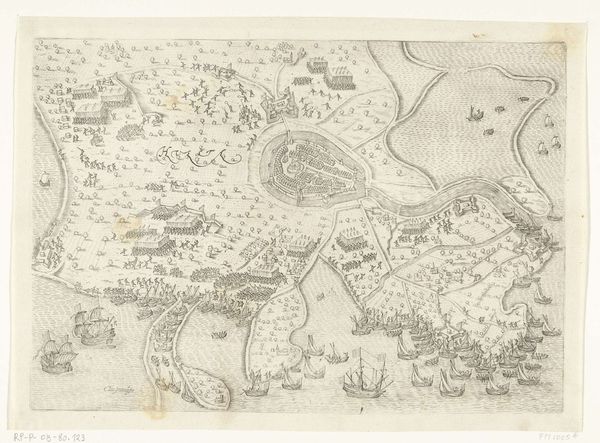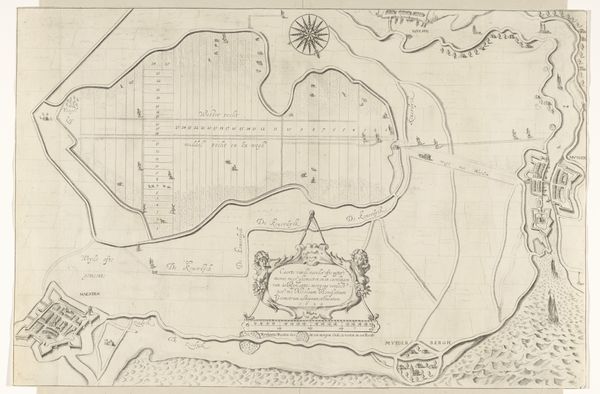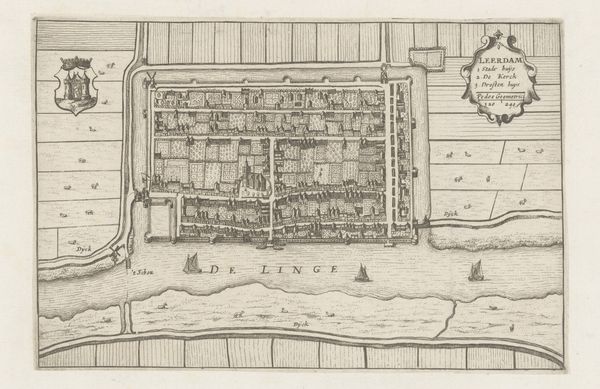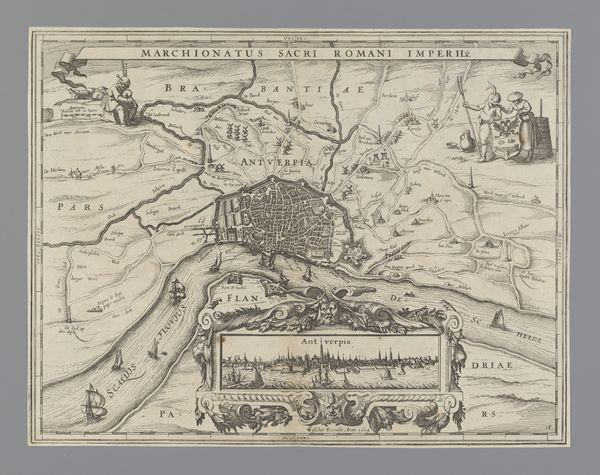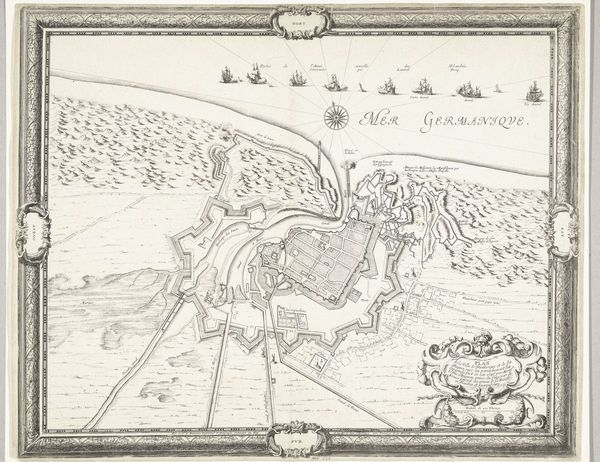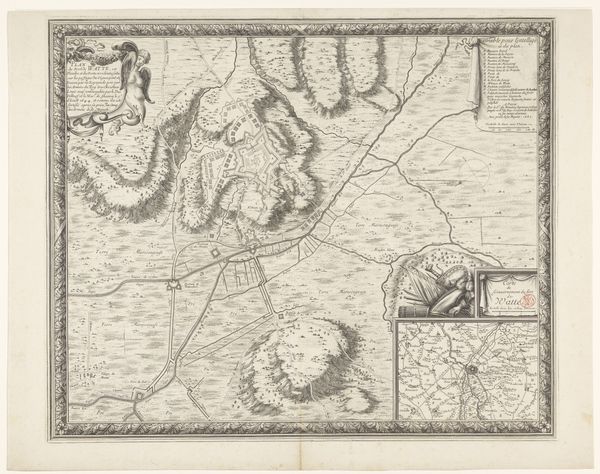
graphic-art, print, paper, engraving
#
graphic-art
#
baroque
# print
#
paper
#
cityscape
#
islamic-art
#
engraving
Dimensions: height 381 mm, width 481 mm
Copyright: Rijks Museum: Open Domain
Curator: We’re looking at "Plattegrond van Jeruzalem," a Baroque engraving from 1750 by Jan van Jagen. Editor: It’s a surprisingly clinical image, wouldn't you say? The city feels almost… dissected. What catches my eye immediately is the almost obsessive rendering of fortifications; those walls practically scream control. Curator: Control is absolutely central to understanding the imagery here. Maps like these weren't just for navigation; they were instruments of power. Think about who commissioned these and who consumed them. The European fascination with Jerusalem during this period was tied to both religious and political ambitions. Editor: Yes, and it's revealing how the landscape is rendered. Look at the hills; they seem almost artificially neat. The means of production here is critical; this isn’t just some organic landscape sketch, but rather an industrialized vision captured meticulously through engraving. Paper becomes territory. Curator: Precisely. The level of detail—down to individual structures within the city walls—speaks to the desire for knowledge and domination. This piece wasn't simply to document what exists; it actively created an idea of Jerusalem within the European imagination, solidifying its strategic and symbolic importance. Editor: What gets me are the actual production choices made in Jagen’s workshop, and in his time, the division of labor was extreme. It has a surprisingly strong relationship with later modes of mechanized production. This wasn’t just one solitary artist’s vision being realized in his garret studio! Curator: And that informs its legacy. These kinds of depictions ended up in books, atlases, and government offices, subtly shaping policy and public perception of the region. Editor: A fascinating insight. It gives me a renewed sense of what maps truly communicate—the relationship between those who manufacture the material culture, and the power it serves! Curator: Indeed! Reflecting on its role underscores its value as a historic resource; a lens into power, perception and place.
Comments
No comments
Be the first to comment and join the conversation on the ultimate creative platform.
